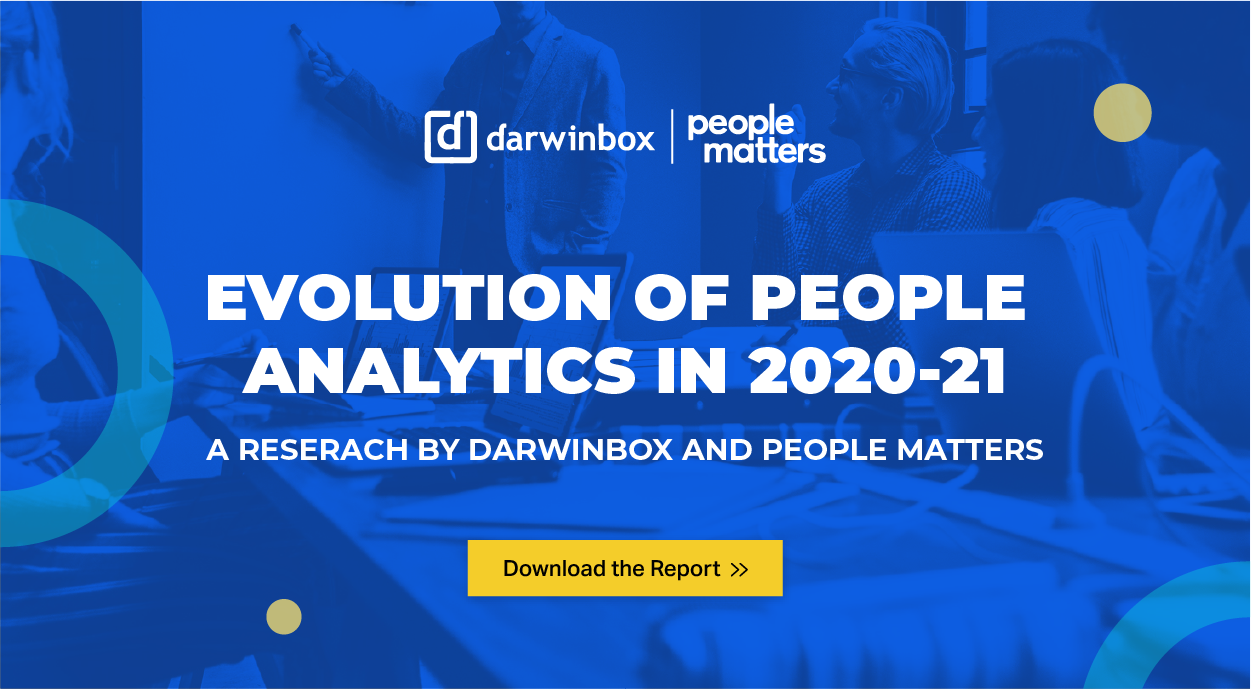
People Analytics
Meaning & Definition
People Analytics
People analytics is the use of employee and candidate's data to understand their impact on business goals and assess the effectiveness of hiring and HR initiatives. People Analytics applies math, statistics, and modeling to candidate and employee data, or big data, to identify and predict patterns in all aspects of hiring and management and promotes positive employee experience. People analytics can be used in measuring employee retention rate, compare compensation, performance and attributes of the employees within the same team and gives a competitive advantage to top performing candidates and help in improving the hiring process by identifying the top performing candidates and understanding optimise spend on hiring.
Frequently Asked Questions (FAQ's)
-
Is people analytics different from HR analytics?
-
Where in HR does 'people analytics' apply exactly?
-
How does people analytics facilitate the recruitment process?
-
What are some ways in which employee engagement can be improved with people analytics?
-
How can people analytics be used to evaluate employees’ performance?
-
What is the importance of people-analytics in an organisation?
-
What are the process of people analytics?
-
What are some Important metrics for choosing the right people analytics tool?
-
Is people analytics different from HR analytics?
HR Analytics captures and measures the functioning of the HR team itself. For example, analyzing KPIs (Key Performance Indicators) such as employee turnover, time to hire, etc. Such analytics are only relevant to the HR team and they can be held accountable for. Whereas, People Analytics aims to encompass HR, the entire workforce data and customer insights. People Analytics inculcates the approach of measuring and analysing all this information and knitting it together to improve decision making and business performance.
-
Where in HR does 'people analytics' apply exactly?
People analytics can significantly cut the time spent manually screening potential additions to your team. The analysis generates a shortlist of candidates that can effectively take on the role based on their qualifications as well as other relevant points. It can also determine how strongly the team feels about the company and the work that they do. The business leaders can then identify where they are going wrong as an employer and then improve the culture so that the employees can look forward to coming in to work.
-
How does People Analytics facilitate the recruitment process?
People Analytics can accelerate the recruitment process and lead to better hires. The traditional hiring process is bogged down with processes and unnecessary steps. People analytics can play a significant role in streaming the hiring process by running algorithms based on candidate pre-screening and job qualifications. This will do the heavy lifting of narrowing down a massive stack of applicants. In addition to saving human resource departments significant resources and operating costs in the hiring process, people analytics saves companies money by facilitating the answers to questions about employee-specific resources.
-
What are some ways in which employee engagement can be improved with people analytics?
By implementing engagement surveys, and using data analytics, you can identify managers who are engaged, versus those who are disengaged, and take measures to evaluate your managerial criteria or determine the best ways to incentive disengaged leaders. You can also use talent assessments to determine what makes your high-performing employees more productive and engaged, then integrate these criteria into your talent selection strategy. By the same token, analyzing the skills, knowledge, and abilities of your bottom performers enables you to understand any variance in performance.
-
How can people analytics be used to evaluate employees’ performance?
HR analytics is helpful in recognizing the relevant professional training courses for employees and measuring their progress. It analyzes the effectiveness of the training and cost per participant during the course of the training. Predictive analytics can be applied to the workforce to identify traits/patterns that account for bad or good performance on an individual and team basis. Since analytics is a combination of various algorithms, it also gives objective insight into their work preferences and the factors that drive their performance.
-
What is the importance of people-analytics in an organisation?
The primary role of people analytics is to provide the organisation with insights that allow them to make better business decisions, thus improving business performance, while simultaneously improving the employee experience and well-being. Essentially people analytics focuses on people and the impact they drive, it provides an outside-in view of the value that HR delivers to the business.
-
What are the process of People Analytics?
The process involves the following steps -
- Step 1: Collect data that matters
- Step 2: Experiment, explore, enrich
- Step 3: Create an action plan
- Step 4: Build a fact-based, measurable HR business strategy
- Step 5: Take tech support
-
What are some Important metrics for choosing the right people analytics tool?
Some important metrics to look out for while choosing the right people analytics tool are -
- Keep Analytics Distinct From Reporting
- Make Self-Service Access A Must-Have
- Opt For Cloud-Based People Analytics Over BI Tools



